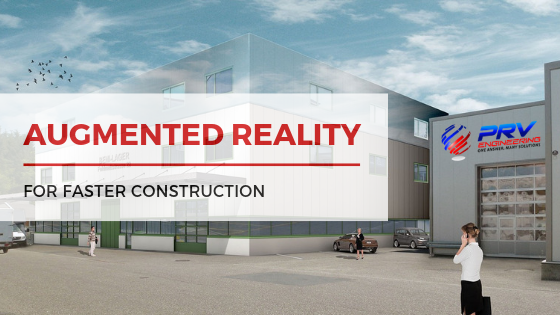
For some time now, many industries have taken to Augmented Reality (AR), or at least, thought about the technology. And why not as the AR market is expected to reach $60,55 billion by 2023 as more tech giants are linked to investments pushing the growth. Some of the major players involved in Augmented Reality investments and acquisitions include Google, Apple, Facebook, Samsung and Intel.
Augmented Reality is also known as spatial computing which is rapidly growing and expanding into several business and industrial applications. Spatial computing is a broad term used to describe how humans interact with computers in the same surroundings. This means that an Augmented Reality system makes it feel as if digital media is physically present thanks to interactive design and gesture.
AR software will lead the 2023 market growth as a result of more people using smartphones, tablets, and other devices for implementing AR Tech, This especially the case within the consumer, commercial, and enterprise sectors.
Emerging Markets For Augmented Reality
While there is a massive demand for Augmented Reality in healthcare, retail, and e-commerce, there are many emerging opportunities within architecture and the enterprise industry. Contrary to what some may believe, Virtual Reality (VR) and Augmented Reality are no longer just for gaming. Today, these technologies are showing off their capabilities in nearly every industry.
In fact, the technology is rapidly changing how architects and engineers work on certain construction projects. AR technology allows humans and machines to seamlessly interact and collaborate to create a product that could change the way businesses make presentations.
It is no secret that VR, AR and Mixed Reality technologies have grown substantially in recent years from gaming and entertainment to successful business use cases. One such example is how engineers use Augmented Reality in smart city planning.
Smart City Planning and Building
The construction industry is a fantastic example of how immersive technologies can help develop smart cities. Here, Augmented Reality plays an integral role in the construction process. As cities collect massive amounts and data, AR can make that information easily visible.
Architects and engineers can find a simpler and more creative way to show urban planners what their projects will look like. Whether it’s building a new transportation hub, shopping centre or skyscraper, Augmented Reality can simplify the job considerably. AR technology will enable companies to create a real life representation of their plan through engaging visuals which could also help speed up the decision making process.
Construction And Augmented Reality
Technologies are advancing all around us and none more so than Augmented Reality platforms for business. One compelling example is WakingApp, a professional Augmented Reality studio that makes it easier to design smart city projects. WakingApp enables builders, architects and engineers to visualise projects before building it which also helps them avoid mistakes.
That’s not even the best part as developers and designers don’t need previous coding experience to use the WakingApp technology. Nearly anyone can take full advantage of the handy toolset to quickly create quality AR experiences to showcase construction projects.
Case Study: WakingApp
The MLM Group is an engineering, environmental, and building control design consultancy. They were able to transform their presentations using WakingApp AR technology to show their future projects to potential customers far beyond the traditional blueprint.
According to Matan Libis, CEO of WakingApp, “Augmented Reality experiences add cost-saving value to construction projects and make the entire building process more efficient because right from the start, engineers and architects are able to create a detailed, interactive example of the end project.”
Libis continued by stating that, “AR provides builders, and their clients, with a level of understanding that far exceeds any blueprints or 3D models, and often AR experiences can be created in a fraction of the time, offering users both practicality and efficacy.”
Faster Construction With Microsoft HoloLens and Augmented Reality
As we’ve already established, immersive technologies are already playing a major role in several sectors. In terms of construction projects, Microsoft’s HoloLens headset can really bring 2D blueprints to life. On construction sites workers can combine 3D models with real time data to identify possible problems and faults in the real world and initiate a repair before building commences.
This can really speed up the construction process while also increasing the quality of the final product. With this technology, construction workers can take their skills to the next level, improving their knowledge and using it to make more informed decisions.
Construction And Fabrication With PRV Engineering
PRV Engineering has been supplying steelwork and steel fabrications into the construction industry for over twenty years. We manufacture and also often install high quality products including bespoke platforms, balconies, balustrades and handrails in both Mild Steel and Stainless Steel. As any experienced engineer and construction professional will tell you, never overlook the importance of quality steel fabrication in construction.
Over the years we have developed an extensive fabrication department capable of producing a wide range of products and services. Our expertise include very small to the much larger projects, simple and complex products to prototype testing and development.
For more interesting articles on all things engineering, fabrication, construction and technology, please follow our blog and get in touch if you have any questions about PRV Engineering. You can also find us on Twitter, Facebook and LinkedIn to share your thoughts and be part of the conversation.
This site uses Akismet to reduce spam. Learn how your comment data is processed.


 Mail:
Mail: 




Leave a Comments